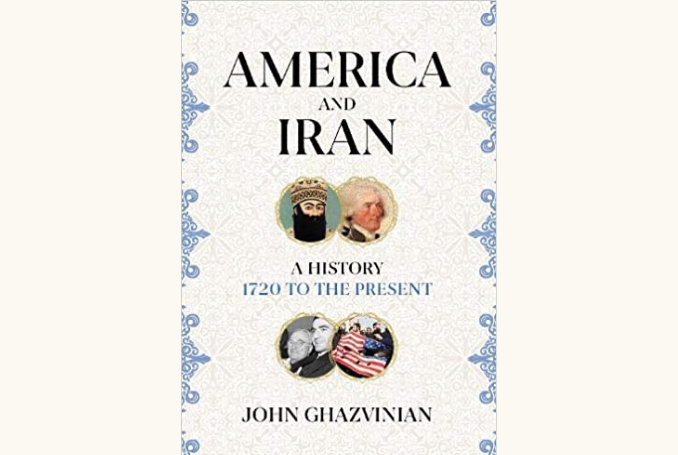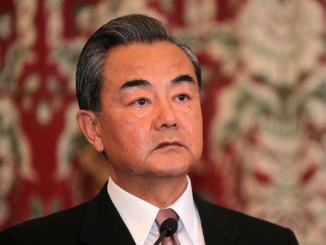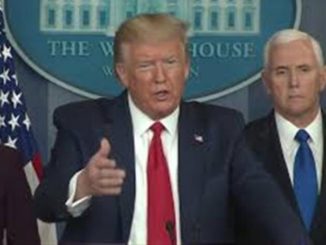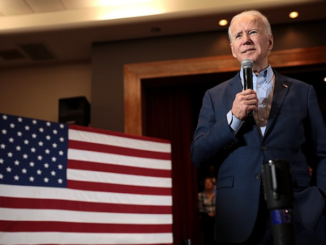
By Jim Miles
(America and Iran: A History 1720 to the Present. John Ghazvinian. Vintage Books, Penguin Random House, New York, 2021.)
The relationship between Iran and America has been one of tension, misunderstandings, and deliberate provocation and manipulations. John Ghazvinian’s America and Iran: A History 1720 to the Present presents a well-researched history examining the ins and outs of the relationship.
In his introduction, he sets the scene,
“…there is not a single problem the United States is dealing with in the Middle East that cannot be traced, in one way or another, to its dysfunctional relationship with Iran….the current state of antagonism between Iran and America is wholly unnecessary.”
His voice is optimistic and he suggests that although “there are people in both countries” who wish to maintain the current antagonism, their voices will “learn to set aside their differences” for “the nobler instincts of humanity.”
The sentiments are in the right place, but unfortunately, the reality is significantly different. It is a well-written book and his material fits in with most other materials I have read concerning Iran and the Middle East.
His record is a bit shy of his optimistic viewpoint but his writing and presentation are clear and well-referenced. It should be a read for anyone interested in Iran-US relations, with the inclusion of Israel’s manipulations in the Twenty-first Century.
There is one big miss that fortunately does not detract from history, as it is the misfortune of all political writing trying to keep abreast of current events that sometimes large events are missed not by error, but simply because of the passage of time.
Published in 2021, and thus having been written a few years earlier, America and Iran end a bit vaguely with the election of Trump after having written a carefully structured account of the Obama years and his cantankerous relationship with Israel and Netanyahu. The miss is – to anyone paying attention to current events since Trump – the impact of Iran’s relationships with China and Russia as the world divides into two polarities, maybe more.
I do find it somewhat surprising that hints of rapprochement between Russia and Iran have been missed, not so surprised that the approaches to China were missed as most of it occurred very quietly without ruffling international feathers. In today’s volatile international scene, a reading of Iran’s relationship with both these two nations is essential, but clearly will not be available until a few decades after the dust has settled.
Israel
The book begins as the title indicates in the 1720s and passes through the centuries of Iran’s relationship not only with the US but also with its Arab neighbors.
For modern history, the events beginning with the US/British overthrow of the Mossadegh democratic government are really the beginning of today’s structures. Israel is not mentioned until the Iran-Iraq war where the main takeaway is that the US and Israel wanted both sides to beat each other up and make it easier to run their own agenda in the region – being full spectrum dominance with Israel as the outpost of western power.
Ghazvinian examines Israel’s influence on US governance, describing how AIPAC and the neocon warhawks essentially ensure that any decisions made by Congress are in Israel’s favor and not helping any Arab country and Iran. Peace was never the objective, control of the region was.
The narrative presented in the Obama era is highly instructive. It shows that while Obama, at least rhetorically, was for peace and change, Congress could easily be manipulated, along with the mainstream media, to present Iran as an ‘always present danger’ to Israel and thus to US interests. Obama did have one success with his second term and the Joint Comprehensive Plan of Action (JCPOA), making arrangements for peaceful uses of nuclear power for medical isotopes not allowed through sanctions.
The agreement was reached with Iran expecting relief from US sanctions that had drastically affected the economy – infrastructure, health, education, environment, and nearly all aspects of life. It was a war by sanctions.
Trump, against anything Obama, simply rescinded US acceptance of the agreement – it was not a treaty and required no approval of Congress. Sanctions were intensified and the other members of the P+5 (the UNSC permanent members + Germany) simply let the decision drift over their interests. Corporations and in particular bankers were afraid to try anything with Iran knowing that the US could block their financial interests rather easily through the Society for the Worldwide Interbank Financial Transfers (SWIFT) in Brussels but essentially controlled by the US
And there the story ended, with Ghzvinian ever optimistic in a doubtful sort of way that the best thing that could happen would be for the US and Iran to somehow open negotiations for a comprehensive rapprochement. But SWIFT and other interests turned Iran eastward to China and north to its once-upon-a-time rival (along with the British), Russia.
And Now for the Rest of the Story
The rest of the story is clouded with war propaganda and a psychological hatred of all things Russian, and perhaps soon all things Chinese. Just after the JCPOA agreement China signed a ten-year $600 billion trade deal with Iran starting in 2016. From 1974 on China rapidly increased its oil, gas, and mineral imports from Iran, and in 2019 Iran signed on to the New Silk Road. Iran will join the Shanghai Cooperation Organization (SCO) officially in March 2023, a group designed to protect the interests of Central Asia and extensions to the Eurasian perimeter.
Russia, now at war with NATO and the US in a proxy fight in Ukraine, is also a member of the SCO and has recently signed agreements for trade and infrastructure development as part of the same Silk Road development plans. Russia and Iran share two distinctions – the most intensive sanctions enacted unilaterally by the US and both have been evicted from SWIFT. These latter two actions truly reach the heart of the situation.
Iran was seriously affected by the sanctions without resources or international favor to be able to compensate for them. Russia was heavily sanctioned – before the invasion – but because of its mature industrial base, huge resources, and the quiet backing of China and the silent backing of much of the rest of the world, Russia has survived and done better than its opponents economically.
And there is the actual story. The US needs to keep its US petrodollar dominant in global transactions otherwise its house of (credit) cards will crash. Russia has divested itself of most of its U.S. financial obligations and has secured large amounts of gold. China is more intricately involved with U.S. financial obligations but is a powerful global economy, carrying much U.S. debt (that could be used to crash the dollar), lots of gold, and is now allied with Russia and Iran, three powerful nations of the Eurasian continent.
Main point: both Russia and China have stated and are acting on their desire to end the domination of the US petrodollar. Obviously, the US does not want that to happen.
Israel’s Increased Violence
Israel has been watching events closely. It still propagandizes Iran as an existential threat. It has tempered this as it watches what is happening between the US and Russia and China, sitting on the fence but most recently slipping over to the US side, probably hoping to extract more money and armaments from their U.S. benefactors.
Underneath the international fog, Israel has stepped up its violence against Palestinians, and as usual, this violence is ignored by the mainstream media. The US influence and the US acceptance of Israeli tactics – their security forces train together – creates a violent racist society in which, obviously, violence becomes the answer to problems of their own creation.
Timing Miss
It is somewhat interesting how Ghazvinian did not see events starting to turn towards China and Russia. On the other hand, perhaps he did, and to avoid editorial discrimination he decided not to approach that issue and focus strictly on the US (and by necessity, Israel). In fairness, the situation has unfolded much more dramatically in the past year, well beyond the writing and research of the book.
However, it works out today, America and Iran: A History 1720 to the Present is a surprisingly strong historical work that deserves to be on the desks of historians, politicians, and students of international relationships. It is clearly written, informative, and very well-balanced in presenting the story of US and Iranian relations up to the beginning of the Trump era.

– Jim Miles is a Canadian educator and a regular contributor/columnist of opinion pieces and book reviews to Palestine Chronicles. His interest in this topic stems originally from an environmental perspective, which encompasses the militarization and economic subjugation of the global community and its commodification by corporate governance and by the American government.







